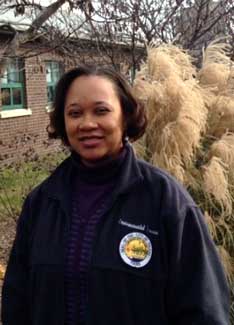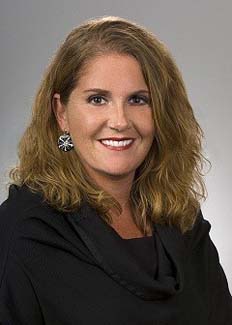Localized Flood Management
Chronic flooding is a critical problem facing many communities. In urban areas impacted by localized or “neighborhood” flood events, green infrastructure practices can absorb rainfall, preventing water from overwhelming pipe networks and pooling in streets or basements. For communities experiencing overbank or riverine flooding, larger networks of green infrastructure can provide extra storage during heavy storm events. In this 90-minute webcast practitioners will cover a range of practices that can help communities manage floods, from small scale interventions such as rain gardens and permeable pavement to coordinated open space and floodplain preservation.
Details
Session 1 — A Tale of Two Cities: Exploring How Two Communities are Using Green Infrastructure to Reduce Flood Risk
Lori Cary-Kothera, Operations Manager, National Oceanic and Atmospheric Administration’s (NOAA) Office for Coastal Management
Patekka Bannister, City of Toledo, Division of Environmental Services
This presentation describes how green infrastructure can help communities manage coastal flood hazard impacts. Participants will learn about how Toledo, Ohio and Duluth, Minnesota are assessing their exposure to flood hazards, identifying areas for green infrastructure to reduce exposure, and evaluating the costs and benefits of implementing green infrastructure. Outreach efforts to share the results of the study with local officials and community members will also be highlighted.
Session 2 — Rain Garden Reserve: Managing Flooding with Green Infrastructure Solutions in Cuyahoga Falls
Tony V. Demasi, City Engineer, City of Cuyahoga Falls, OH
Kari A. Mackenbach, URS Corporation, National Green Infrastructure Practice Leader
In this session the City of Cuyahoga Falls, Ohio will share how they turned four flood damaged properties into a popular neighborhood asset. Using Federal Emergency Management Agency funds, the city was able to transform a group of chronically-damaged residential properties into a green infrastructure pocket park complete with rain gardens, pervious concrete, and solar powered lighting. Speakers will describe how the City engaged community members to create a park design that balanced need for security, open space, and localized flood relief.
Speakers
Lori Cary-Kothera

Lori Cary-Kothera is the Operations Manager at the National Oceanic and Atmospheric Administration’s (NOAA) Office for Coastal Management. In addition to leading the effort for Digital Coast, Lori works on a variety of projects helping local coastal resource agencies better utilize technologies including GIS and social media. Recently Lori has been working with a number of communities in the Great Lakes helping to address their flooding issues using green infrastructure techniques. Lori has a BS in Biology and Environmental Science from Bowling Green State University and a MS degree in Biological Oceanography from Florida Institute of Technology.
Patekka Bannister

Patekka Pope Bannister is the Chief of Water Resources for the City of Toledo, Ohio. She has over 10 years of experience working in in Environmental Compliance issues. Patekka has a wide range of experience including manufacturing, government contracting, and municipal operations. She has become a leader in the Toledo/Lucas County area for implementing Green Infrastructure to help reduce recurring flood problems.
Toni V. Demasi

Toni Demasi is the City Engineer for the City of Cuyahoga Falls, Ohio. His responsibilities include the oversight for the design and construction of all public improvements including roads, bridges, sewers, and waterlines. As the Flood Plain Manager, Mr. Demasi reviews all site plans located in special flood hazard areas, and coordinates such activities with Army Corps of Engineers, Ohio Department of Natural Resources, and Ohio Environmental Protection Agency. Mr. Demasi is a member of Akron Metropolitan Area Transportation Study Technical Advisory Committee and Transportation Improvement Plan Subcommittee, and the Northeast Ohio Four County Regional Planning & Development Organization Environmental Resources Technical Advisory Committee.
Kari A. Mackenbach, CFM, BCES

Kari Mackenbach is the National Green Infrastructure Practice Leader for URS. Ms. Mackenbach coordinates the efforts of the Practice across the US. She is responsible for the overall quality of the practice related to work performed by the URS Green Infrastructure Practice Group. One of Ms. Mackenbach’s key responsibilities’ is to leverage lessons learned from other cities across the County on GI design innovations, new O&M strategies and work to standardize these approaches within the Practice. Mackenbach’s background as a Board Certified Environmental Scientist (BCES), Certified Floodplain Manager (CFM) and as an American Rainwater Catchment Systems Association (ARCSA) accredited professional provides her with unique capabilities to work with communities and other professionals on multiple levels as it relates to sustainability and more specifically green infrastructure initiatives.
